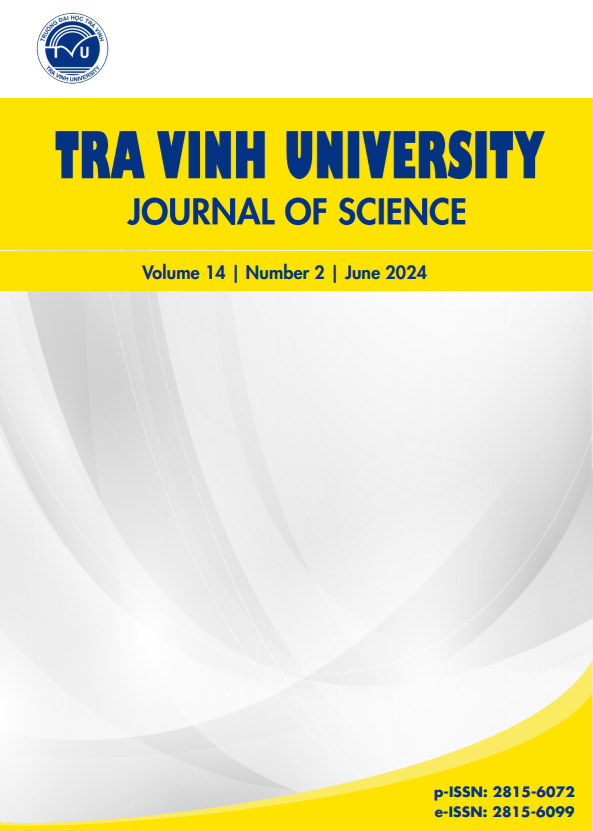EXTENSION MODEL DEVELOPMENT OF COMMERCIAL RICE PRODUCTION IN SAVANNAKHET PROVINCE, LAOS
Abstract
The government of Laos conducted the climate-friendly agribusiness value chains sector project in the year 2019 to encourage the improvement of competitiveness in rice production and to develop production according to meet the needs and production programs of the government. However, the number of farmers who participated in this project is an insignificant proportion compared to the number of total rice farmers. This study aims: 1) to find the problems and suggestions about commercial rice production, and 2) to develop an extension model for commercial rice production. Using a mixed methods research design, data were gathered from a) structured interviews (n = 177) and b) workshops with extension agents (n = 21). The data was analyzed using such statistics as frequency and percentage. The findings showed that most respondents were concerned with 16 problems and eight suggestions about commercial rice production. The extension model of commercial rice production comprised four main components: developing knowledge and understanding of the farmers; approaches for strengthening attitudes; encouraging the use of modern technology; and government supporting factors that could support commercial rice production. Therefore, all concerned organizations should set a clear policy to increase the capacity of the farmers and continue to develop the market system for increasing competitiveness that the farmers can sell their rice products at a satisfactory price as a result, farmers who do not participate in the commercial rice production extension project will turn to participate in the project more in the future.
-- PDF Article: https://drive.google.com/file/d/1fEtCqLwemMY9fPIIV7F1lVqoTe2wtVxP/view?usp=sharing
Downloads
References
Institute, Ministry of Agriculture and Forestry; 2002.
[2] Ministry of Agriculture and Forestry. Agricultural
statistics year book 2020. Lao PDR: Ministry of
Agriculture and Forestry; 2020.
[3] Ministry of Agriculture and Forestry. Agriculture development strategy to 2025 and vision to the year
2030. Lao PDR: Ministry of Agriculture and Forestry;
2015.
[4] Musoke S. Increasing agricultural commercialisation
and enhancing food security and nutrition in Lao
PDR: A framework for balanced policy analysis,
planning and programming. Lao PDR: Ministry of
Agriculture and Forestry of Laos; 2020.
[5] Ministry of Agriculture and Forestry. Development
strategy of the crop sector 2025 and Vision 2030. Lao
PDR: Ministry of Agriculture and Forestry; 2015.
[6] Somphong C, Bounmy P, Outhevy V, Inta C, Souvanthone D. Study on potential products identification
in three provinces: Savannakhet, Khammouane and
Bolikhamxai. Research report. Lao PDR: Savannakhet
University; 2021.
[7] Ministry of Agriculture and Forestry. Lao People’s
Democratic Republic: climate-friendly agribusiness
value chains sector project. Lao PDR: Ministry of
Agriculture and Forestry; 2022.
[8] Chanthavong I, Nilawonk W, Kongtanajaruarun R,
Areesrisom P, Muakyod P. Factors affecting the farmers’ adoption of commercial rice production in Savannakhet Province, Laos. Journal of Applied Economics
and Management Strategy. 2023;10(2): 91–105.
[9] Food and Agriculture Organization of United Nation.
Lao People’s Democratic Republic rice policy study.
Food and Agriculture Organization of United Nation;
2012.
[10] Oladele OI. Features of agricultural extension models
and policy in selected sub - Saharan Africa countries.
Journal of Agriculture and Environment for International Development (JAEID). 2011;105(1): 35–44.
[11] Worth SH. Agriflection: A learning model for agricultural extension in South Africa. Journal of Agricultural Education and Extension. 2006;12(3): 179–93.
[12] Surudhi M, Asokhan M, Arunachalam R.
Utilization pattern of extension tools and
methods by Agricultural Extension Agents.
Journal of Extension Education. 2017;29(2).
https://doi.org/10.26725/JEE.2017.2.29.5838-5849.
[13] Ekasari ZK, Saleh SAM, Jusoff K, Salman D, Kasirang A, Arsyad M, et al. Communication pattern
and conflict in agricultural extension. Asian Social
Science. 2013;9: 27.
[14] Sirisatidkit P. The model development of farmer adaptation sustainable of Songkhla basin area. Graduation
thesis. Thailand: Silpakorn University; 2014.
[15] Department of Agricultural Land Management, Ministry of Agriculture and Forestry. Agriculture cover
map for Lao PDR. 1: 20 000. Lao PDR: Ministry of
Agriculture and Forestry; 2019.
[16] Thanasack P. The role of agricultural extension services on rice production efficiency in Laos, a case
study on Bolikhanh District, Bolikhamxai Province.
Master’s thesis. Japan: Kyushu University; 2012.
[17] Foley JM. Howard H. Kendler (1919–2011).
American Psychologist. 2012;67(6): 490–491.
https://doi.org/10.1037/a0028360.
[18] Lien AS, Jiang Y. Integration of diffusion of
innovation theory into diabetes care. Journal
of Diabetes Investigation. 2017;8(3): 259.
https://doi.org/10.1111/jdi.12568.
[19] Wan L, Ding F. Decomposition-and gradient-based
iterative identification algorithms for multivariable
systems using the multi-innovation theory. Circuits,
Systems, and Signal Processing. 2019;38: 2971–2991.
https://doi.org/10.1007/s00034-018-1014-2.
[20] Phonekeo A. The development of kai noi rice production model according to the local culture of Kai Noi
rice farmers in Xieng Khouang, Lao PDR. Doctoral
dissertation. Thailand: Maejo University; 2022.
[21] Keeves JP. Educational research, methodology, and
measurement: An international handbook. Oxford:
Pergamon Press; 1990.
[22] Atthawit W, Benchamas Y, Bumpen K. Area based
management extension for sustainable rice production: lessons learned from sustainable rice farmers
groups in Det Udom District, Ubon Ratchathani
Province. International Journal of Environmental and
Rural Development. 2018;9(1): 1–6.









